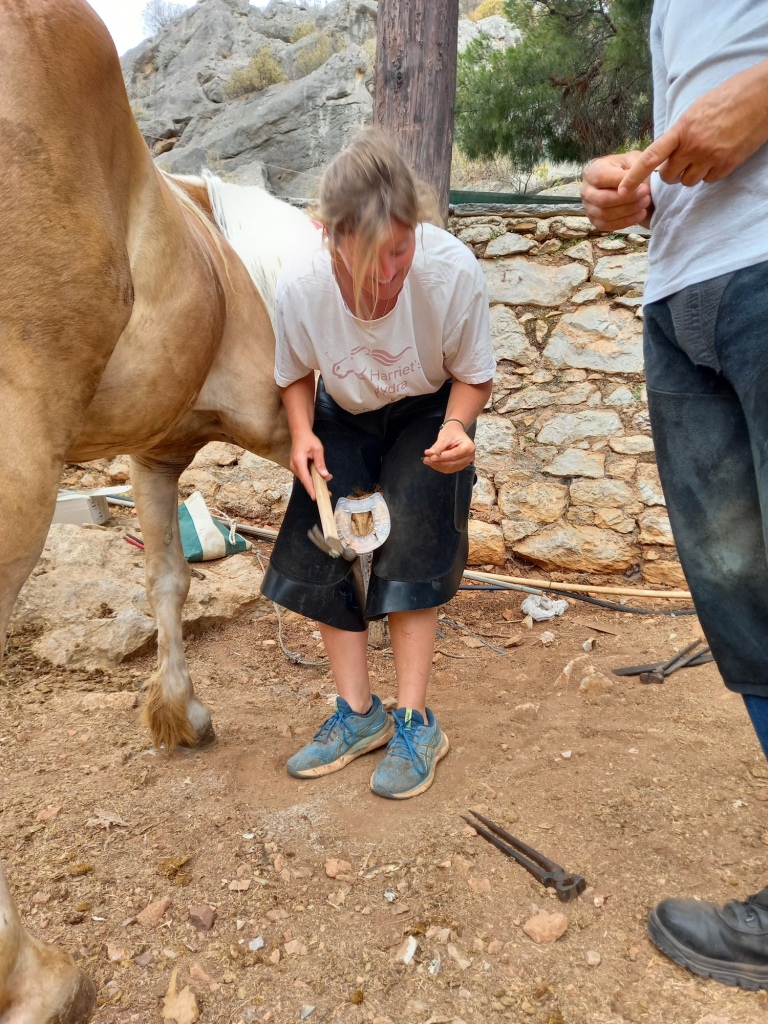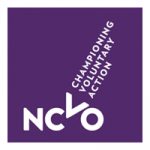On May 17 & 18, 2024, Animal Action Hellas Equine Care team, made a 2-day outreach visit to the island of Hydra, in Argosaronicos, in order to treat the working equines and train the local owners.
On the way to Hydra, Equine Team members, old and new, cannot but bring in mind memories of their previous visits. This small island off the easternmost coasts of Argolis receives an outreach expedition almost every year since the beginning of the Equine Programme. Hydra bears one unique characteristic among Hellenic insular and continental locations which makes worthy the continuation of our efforts: privately owned vehicles of any kind (including bikes) are not allowed and equines are the only means for the continuation of everyday life on the island. Within our aims, through our Equine Care Programme, we stand by all working equines in Greece and put the interests and welfare of animals first in whatever we do.
Veterinarian Kostas Okkas, dental technician Alkis Gkeskos and farrier Vaios Bakratsas offered their services to 50 equines.
The owners who know our work and ask for our team each year, sought our services again. The acquainted that come every year, several which had not come for several years, and several new ones welcomed our services, education and training. New animals required careful approach, while the familiarized to our services arrived with self-confidence at the “service point”. Inexplicably, there is a number of the island’s equine owners that we have never seen approaching us; there are no other similar services offered on the island so this makes us worry and wonder whether these equines have ever received any treatments or are they are left until something serious happens to them? Prevention is always better than cure and this is something that the majority of Hydra’s owners has realized and seen happening in real life. We expect all of the owners to do the same.
Most of the animals that the team treated were horses again this year. Mules and donkeys were present as well, all receiving our team’s professional services.
The vast majority of the animals that our team treated were in ideal body condition score, with only three slightly under the ideal weight and one out of five being overweight. No serious health problems were seen apart from insect-caused skin diseases; several equines suffering from sweet itch, an allergy that is caused by the midges’ bites during summer and is difficult to help the animals, which are completely relieved when the summer heat and insects are gone. A skin infection under a donkey’s eyes caused by excessive lacrimation due to stable flies. And small wounds on a donkey’s legs caused by fly bites. No injuries from tack or accidents were seen on any animals.
As expected, after years of annual treating, no extreme problems were encountered, this May, during dental examinations. Naturally expected sharp edges of reasonable size and, sometimes, small hooks were all that needed floating. One worth noting exception involved a mule that had not been examined ever before. Luckily, it had changed owner within the last few months and was lucky to get a responsible new owner. Enormous hooks had developed on its upper premolars which required floating with electric equipment. Thanks to its mild temperament the work was completed easily and the team and its new owner were more than happy to see it grasping and chewing wild vegetation immediately after the end of the procedure. All owners who brought their animals expressed us their gratitude. Although the local community in general acknowledges the importance of preventive routine dental checks, we expect that these owners who still refuse to bring their animals to the team, will realize that oral examinations and routine floating are essential not only for animals with problems but also for healthy ones, irrespectively of age.
Although most of the equines have their hooves worn down as they walk on the island’s hard ground, almost all received hoof trimming by our farrier, in order to correct some imbalances. A few local owners who trim and shoe their animals themselves, once more this year received personal training in basic correct shoeing and shod their animals under our farrier’s surveillance. It is worth noting a lameness case of an elderly mule that had serious white line disease and concurrent onychomycosis, a fungal infection of the hoof. The farrier had to trim and clean the hoof deeply, disinfect it with copper sulphate creme and bandage it. Advice was given to the owner on how to continue the treatment and, although a difficult case, our vet is hopeful that soon the hoof will return to normal.
This year’s visit was successful for the fifty equines that arrived, but the truth is that our team was disappointed, as more animals were expected to come. It was “bad luck” that the commercial ship that had not arrived to the island for many days due to mechanical failure, happened to arrive on the second day; work overload appeared suddenly in the harbour, therefore a big number of locals were too busy to carry the materials and were either in a hurry and left without receiving full treatments, or did not manage to bring their animals at all.
Six more microchips were placed this year. The electronic platform for registration is active, therefore all the microchips placed are being officially registered. We were glad to hear that now vets from the mainland also visit the island to place microchips, so gradually the majority of equines should be microchipped and registered. The initiative of the Municipal Authority of the island has contributed decisively into achieving the placement of microchips; owners have been informed about the necessity of the electronic identification of the animals and are happy to comply with the new legal framework K.Y.A. 726/107637/ 21.4.22.
A great goal achieved after all these years of treating Hydra’s equines, is the fact that the visit the last years takes place under the auspices of the local Municipality. For the fourth consecutive year, the Municipality of Hydra undertook the entire cost of transportation, accommodation, food and work of our team, while AAH covered, as each year, the veterinary, dental and farriery equipment. This reflects not only the understanding of the island’s authorities regarding the importance of equine welfare, but also their appreciation towards our organization and also shows how societies can make steps and progress towards animal welfare if the willing is combined with actions.
Unfortunately there was also a disappointing happening during this visit. Our team was sad to see the great amount of rubbish that for an unknown reason was scattered all over outside the rubbish bins at the working area in Gefyria, something that made a negative impression not only to our team but also to the locals and tourists that happened to walk that way. The Mayor George Koukoudakis and Vice Mayor Mairi Katsika who visited Gefyria to meet our team and see their work, were witnesses of the situation and our complaints and managed to have the place cleaned up before our departure. It is not our intention to stay in the negatives and we are confident that we will not come across a similar situation next year. We also look forward to hearing about progress with the shade in the harbour (is a permanent construction possible to be built, instead of the umbrellas that stay closed when it is windy?) and the water troughs on the island (do they always stay clean, with fresh cool water?).
All equines, working, or not, deserve our respect and the best care they can get.














